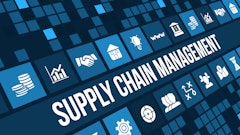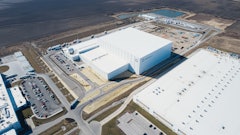
Sandwich maker Subway was an environmental leader long before sustainability was in vogue. When the Independent Purchasing Cooperative (IPC) was formed in 1996—Subway’s franchisee-owned and operated buying cooperative—the group took a long hard look at its supply chain.
At first, Miami-based IPC was primarily responsible for procuring food, packaging, equipment and services for all Subway locations in North America, negotiating the lowest costs for its franchisees. But by 1999, IPC turned its attention to logistics and distribution, realizing that there were significant opportunities to be gained by reducing the amount of miles driven, revamping packaging and redesigning its supply chain network.
Subway wanted to become the “greenest QSR in the world,” so in 2006, senior management initiated a formal sustainability effort, not knowing how it would impact the bottom line but certain that it would benefit suppliers, distributors, store operators and ultimately, consumers.
“Being a food organization, food safety and quality are our number one priority and we have stringent audit processes all the way back to the farm,” says Tina Fitzgerald, IPC’s director of produce and social accountability. “We have good agricultural practices for all of our produce and we’re always looking at the vendor code of conduct. We used to address just the manufacturing level, but now you have to look at how the workers are being treated and how the animals are being taken care of.”
The co-op decided to focus on four areas—energy efficiency, resource conversation, waste reduction and food safety—and those efforts have paid off. In 2009, IPC saved 294,360 barrels of oil, eliminated 126,456 metric tons of carbon dioxide and preserved 1,047 acres of trees from deforestation.
IPC started with packaging by switching to “green” cup carriers, recyclable napkins, salad bowls, utensils and paper towels. “One of our top priorities was to reduce unnecessary packaging and source material—it’s the lowest hanging fruit,” says Fitzgerald. “Right now we’re really focused on increasing the recycled content, recyclability, degradability and compostability of our products, as well as making them better.”
The co-op is doing this in various ways throughout it supply chain. For example, one of its suppliers provides cleaning products for Subway customers worldwide. The products, pre-mixed with water, had been shipped as six one-gallon containers in a case. The supplier extracted the water and started shipping the product as concentrated strips, which dramatically increased the number of cases that could be put on the truck.
“The strips have enabled us to save about 180,000 pounds of plastic and 150,000 pounds of corrugate a year,” says Julio Berrios, IPC’s supply chain manager. “Plus, there is little product damage and our customers like the fact that these take up less storage space in their back room.”
IPC is getting these metrics by measuring its carbon footprint, which is often a challenge for companies that want to go green. “We wanted to establish a carbon base line as well as see where our growth was going,” says Berrios. “We needed to measure our supply chain and establish our annual numbers. It seemed like an incredible task—we are a large chain and have a tremendous amount of data. We knew we needed outside help.”
IPC turned to Atlanta-based Chainalytics for help. Chainalytics offers a carbon footprint analysis service that can measure greenhouse emissions, calculate energy consumption and reduce the environmental impact of a supply chain.
“We’re finding that many of our clients need to know and report on their carbon footprint,” says Jeff Metersky, vice president, supply chain strategy practice, Chainalytics.
“For companies that want to be leaders in sustainability, they have to establish that baseline and understand the levers they can pull to reduce emissions in the supply chain.”
Metersky says that companies need to be able understand their own infrastructure as well as what they can and cannot control. For some companies, that may mean more distribution centers or replenishing a warehouse more frequently, or changing transportation modes. In IPC’s case, it involved moving a number of facilities around. “We’re very aware of the placement of the facilities of our redistributors, distributors and suppliers. We have found that by properly placing those facilities to our needs, it actually drives down the cost of our supply chain,” says Berrios.
For example, one of its salad packaging suppliers moved a facility from West Virginia to Abilene, TX, to be closer to its redistribution center. This move cut the supplier’s annual transportation by more than one million miles and eliminated 1,967 metric tons of greenhouse emissions. Since IPC realigned its distribution network, it has been saving 17,000 shipments annually since 2006 and by relocating facilities, the company reduced miles by 15,104,661 in 2009.
“It’s a matter of right-sizing your supply chain—how many distributors do I need based on how many stores I have. We’re always looking to optimize the load build and make sure our product is traveling in full truckloads whenever possible,” says Berrios. “We also have to evaluate where the product was moving and in the right mode. Many of our loads that were carrier driven wound up being split between carrier and rail.”
To establish a baseline for a carbon footprint, Metersky says the vast majority of the information comes from shipment transaction histories. “We take a look at all of the physical movements you made in your supply chain, so that takes care of the transportation-related carbon footprinting. Then we look at activities in terms of what’s happening inside the manufacturing operations, so we’re looking at the production history and the warehousing aspects.”
Depending upon the size of your network, Metersky says the carbon footprinting process can run anywhere from $20,000 to $50,000. “The biggest lead time is the client pulling the production history,” he says. “As a stand alone project, it can take a week or two to get the carbon footprint once we have the data.”
Reducing Energy Consumption
Many food companies are reducing their carbon footprints in various areas of their supply chains. For example, Tropicana, the Chicago-based division of PepsiCo, reports that it is reducing particulate matter emissions by an estimated 16 tons per year and nitrogen oxide emissions by 373 tons per year, by upgrading its chilled delivery fleet operation to “greener “ models and replacing older trucks.
This past April, Tropicana placed two hybrid diesel-electric medium-duty trucks on the road under a lease through PACCAR Leasing (PacLease), Bellevue, WA. The hybrids, which service downtown Chicago, allow Tropicana to eliminate emissions and fuel consumption associated with the refrigeration engine through the use of a hybrid refrigeration system. The system draws power from the truck’s powertrain and stores it. Using that stored energy, it maintains ambient temperature in the cargo area within set specifications throughout the delivery route.
Tropicana’s direct store delivery unit operates trucks at 22 locations, including Chicago, Denver, Los Angeles, Miami, Phoenix, San Francisco and Seattle. Over the next few years, the PepsiCo unit will continue to replace its older trucks with the more fuel-efficient, environmentally preferable trucks.
The acquisition of the hybrid trucks comes on the heels of the company’s move to replace 72 older delivery trucks with Peterbilt medium-duty models also placed into service under a full-service lease through PacLease.
“With the new hybrids, we’re very optimistic about getting an additional 35 percent improvement in fuel economy over that of our standard diesel-powered Peterbilts,” says Bill Davis, national fleet manager for Tropicana. “Based on numbers we’ve gotten from Peterbilt and PacLease and on the experience of other companies that have adopted similarly equipped hybrid trucks, we expect to get 10-plus mile per gallon. That has a lot of potential for Tropicana and PepsiCo.”
Kemps LLC (formerly Marigold Foods) turned to U.S. Energy Services in 2001 to help reduce energy costs. Kemps is a manufacturer of milk, ice cream and other dairy products, headquartered in St. Paul, MN, and Minneapolis-based U.S. Energy Services offers energy management services.
Three of Kemps five main processing plants obtain their natural gas through U.S. Energy Services’ transport service, creating great cost savings. In Minneapolis for example, the utility announces its gas price and within three days, U.S. Energy determines whether it can find its clients a lower price elsewhere. For Kemps, this service has saved tens of thousands of dollars annually. Case in point, the company saves $40,000 to $50,000 per year in energy costs at its Minneapolis plant alone.
At another Kemps plant, a backup fuel system alternates between using natural gas from the utility company and fuel oil, depending on which fuel is less expensive at the time of purchase. Prior to each month, U.S. Energy Services analyzes the forecasted demand and energy market prices to determine which will be most cost effective. Armed with this information, Kemps can switch its system to run on either fuel. In a market of unprecedented volatility, Kemps has saved more than $90,000 dollars in energy costs since implementing this system in 2005.
“Receiving energy price analysis is especially important considering the volatility of fuel prices,” says Bob Williams, Kemps’ vice president of operations. “Having multiple options helps us keep costs down and ensures we stay in line with our budgets.”
Another Minnesota food manufacturer that has lowered energy costs is Faribault Foods Inc., which has reduced natural gas usage by 38.7 percent since 2007 at its Faribault, MN, plant. The Minneapolis-based company produces canned beans, chicken, chili, pasta, baked beans, soups, stews and vegetables, as well as aseptic juice pouches and organic food items.
The natural gas reduction was achieved by a system created by Faribault Foods and Thermo-Environmental Systems, which captures and transfers energy from heated water within the plant to water entering the plant. Given the amount of energy used in its water-intensive cooking systems, this had a dramatic effect on the natural gas consumption in the plant.
The company is also using water more efficiently at the plant. The annualized reduction in water usage exceeds 100 million gallons and allows the plant to reuse much of the water that used to go down the drain. The impact of the natural gas savings accounts for a reduction of 3,030 metric tons of carbon dioxide each year—the equivalent of removing 579 passenger vehicles from the road each year, according to the EPA greenhouse gas equivalency calculator.
“Reduced usage of energy and resources allows us to reduce costs and be more competitive in the marketplace,” says Frank Lynch, the company’s executive vice president of sales and marketing. “Increasingly customers are selecting suppliers that place an emphasis on sustainability.”
Pallets Can Be Green, Too
There’s long been a debate over which type of pallet is more sustainable—plastic or wood. Plastic pallet makers claim their pallets are more recyclable than wood and environmentally friendlier. CHEP recently released a study, however, that demonstrates quite the opposite.
The report, produced by Franklin Associates, found that the CHEP system generates 48 percent less solid waste, consumes 23 percent less total energy and generates 14 percent less greenhouse gas than pooled plastic pallets. Compared with limited use white wood pallets, the CHEP system generates 50 percent less solid waste, consumes 19 percent less total energy and generates 5 percent less greenhouse gas.
“When a company evaluates the total program cost and supply chain impact of their shipping platform choice, there are many traditional areas of consideration such as procurement cost and material handling efficiencies,” says Candice Herndon, director, environment and regulatory affairs, CHEP Americas, Orlando, FL. “The use of a pallet pooling system in the supply chain can deliver both economic and environmental benefits at the same time.”
And those benefits can really add up. According to Herndon, for every 100,000 pallets shipped on CHEP instead of pooled plastic pallets, manufacturers and retailers can help to save approximately:
• 53,000 pounds of solid waste (which is equivalent to over 160 cubic yards of landfill space);
• 1.5 billion BTUs of energy (the energy equivalent of nearly 260 barrels of oil);
• And 130,000 pounds of greenhouse gases (would take over 5,600 trees planted and grown for 10 years to absorb that much CO2).
In addition to increased operational efficiencies and transportation optimization, Herndon says, pallet pooling programs can contribute to the success of packaging reduction initiatives by providing better product support and protection as goods move through the supply chain—resulting in less product damage.
Pallet pooling also helps to maximize the inherent benefits of wood, says Herndon. Since the pool operator maintains ownership of the pallet at all times in the supply chain, greater accountability and opportunity for control exists throughout the lifecycle of the pallet.
“For instance, the pool operator can control the sourcing of all lumber used in pallets to ensure quality and sustainable harvesting methods. They are also responsible for ensuring appropriate end of life management controls to keep wood out of landfills,” says Herndon.
“This is not always the case for unmanaged systems where ownership of the pallet constantly transfers.”
When dealing with your suppliers, Herndon adds, it’s important to understand their commitment to sustainability. “The entire CHEP business model was founded on the principles of reuse and recycling over 50 years ago and we continue to place a heavy emphasis on being a responsible corporate citizen and business partner,” she says. “CHEP considers environmental stewardship and social accountability key corporate priorities.”
Scope 1 (direct)
• Cubic feet of natural gas combusted
• Actual/calculated pounds of refrigerant lost for each type of refrigerant
• Amount of vehicle fuel consumed and types of vehicles
Scope 2 (indirect)
• Annual kilowatt hour energy consumption for all locations
• Electricity grid (eGRID) factors for each utility company/location*
• Type of green power purchased and its emission factor
*The EPA's electricity grid (eGRID) factors compensate for different power generation methods in different parts of the country. For example, coal- intensive regions like Ohio generate more
C)2-e per kilowatt-hour than renewable-intensive regions like the Pacific Northwest. For more information, go to: www.cpa.gov/cleanenergy/energy-resources/egrid/index.html
Source: FMI
Electric Reefer Delivers In NYC
Big Green, an all-electric refrigerated cargo truck, is making its first deliveries for a seafood business in New York City.
Down East Seafood owner Ed Taylor and his employees nicknamed the vehicle Big Green because of its green paint job and its green technology. The truck joins the Down East fleet that makes intercity deliveries of fresh fish from the wholesale business in Hunts Point, New York City’s large food distribution center.
“On our daily trips into the city, we pass through some residential areas that have high asthma rates for children so that’s why we decided to go with an electric vehicle,” Taylor says.
A cooperative effort among Brown Cargo Van in Lawrence, KS, Smith Electric Vehicles in Kansas City, MO, and Dole Refrigerating Co. in Lewisburg, TN, the zero emissions truck was made specifically for carrying fresh food and frozen products, like the shrimp, lobsters, oysters and sea bass that Down East hauls.
The refrigeration unit and the Smith electric truck use no fossil fuels. Both the chassis drive motor and refrigeration compressor are fully electric and get plugged in at night.
Blower fans that run throughout the day operate from an auxiliary 24-volt lead acid battery system.
The electric refrigerated vehicle can be used for any type of refrigerated or frozen cargo as long as the user has a dedicated route structure with vehicles returning to the home base daily.
Hydrogen Powers These Lift Trucks
When Central Grocers opened a 960,000-square-foot facility in Joliet, IL last year, the company wanted to increase productivity while limiting costs, maximizing operational efforts and being environmentally friendly.
The facility is one of the few nationwide whose entire lift truck fleet operates on hydrogen fuel cells. YES Lifts LLC, a Yale Materials Handling Corp. dealer, provided the lift trucks, which run on GenDrive hydrogen fuel cells manufactured by Plug Power Inc.
The GenDrive units make use of compressed hydrogen gas converted from liquid hydrogen.
Central Grocers is currently operating a fleet of 224 lift trucks, including reach trucks, stand-up counterbalanced trucks and sit down three-wheel trucks.
Despite the higher startup costs, using fuel cells yields longer-term savings—with costs made up in the difference in labor savings.
Labor productivity will improve by eliminating the time it takes workers to exchange batteries in a traditional battery room operation. A battery exchange typically takes between five and 15 minutes and it’s not unusual to have several operators waiting to switch out batteries. Refueling at hydrogen stations takes no more than five minutes.
In addition, trucks operating on hydrogen fuel cells are more like internal combustion vehicles than battery trucks because they operate at close to full power throughout shifts. And finally, eliminating the need for a battery room allows for a more productive use of floor space.


























